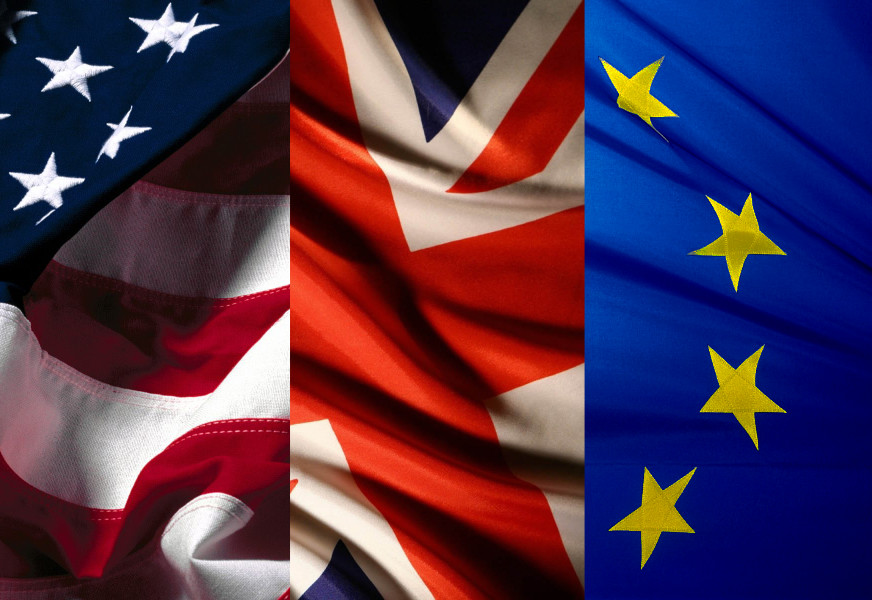
While European authorities try to push more trading back onto stock exchanges, which have entered a period of consolidation, US regulators are angling for a more competitive exchange landscape and several new exchanges are set to launch this year.
That will potentially support more profitable trading in the US than in Europe as competitive pressure drives down fees.
These different environments were established by very similar models of regulatory enforced competition, actively encouraged by the sell side, over a decade ago. In the US, Reg NMS ruled in 2005 that orders must be routed to whichever trading venue offered the best price, pushing trades away from primary exchanges.

“Reg NMS was designed to knit back together a market that was had become fragmented before – before the mid-90s we really only had NYSE and Nasdaq, then a number of things happened that broke down that duopoly with trading on alternative venues like electronic communication networks (ECNs),” says Justin Schack, managing director and partner at Rosenblatt Securities. “But the unintended consequences of Reg NMS ended up super-charging fragmentation.”
Off-exchange trading increased as firms – including brokers – were able to execute trades on alternative venues, which offered different trading protocols to the traditional central limit order book, such as not disclosing trade information ahead of execution, called ‘dark’ in contrast to ‘lit’ markets which had pre-trade transparency.
“Volume going to dark pools exploded in the years following Reg NMS, as brokers sought cheaper ways to execute those orders,” says Schack. “They could comply with the Reg NMS order protection rule by matching or beating prices off-exchange, which to my mind was a pretty major loophole and perhaps an unrealised one.”
In Europe, from 2007, the European Union’s Markets in Financial Instruments Directive (MiFID) allowed trading of stocks away from the national exchanges on which they were listed. This led to a proliferation of new platforms including broker dark pools and multilateral trading facilities (MTFs) the the most successful being Chi-X Europe, now part of Cboe, which rivalled Europe’s largest market, the London Stock Exchange, for market share of European trading volume.
Fast forward to 2020 and exchange operators in the two jurisdictions are facing different scenarios each with their own complexities. Liberated from trading on-exchange, brokers have routed orders to off-exchange venues on both continents, including their own in-house venues. Investment firms have taken advantage of dark pools’ lack of pre-trade transparency to execute large trades without alerting the market to them.
Exchanges have responded, but the net effect has been to push down the margin on trading, and the number of exchange operators has decreased.
US market today
Since 2005, the US has seen American Stock Exchange and ECN Archipelago absorbed into NYSE, now itself part of Intercontinental Exchange. Nasdaq acquired the ECN Inet in 2005, along with Philadelphia Stock Exchange and Boston Stock Exchange. The Chicago Board Options Exchange (Cboe) acquired National Stock Exchange in 2011, later selling it to NYSE. Other ECNs launched in the interim, increasing competition and with major players Bats and Direct Edge themselves merging in 2014, before being acquired by CBOE.
In 2020 US exchange operators have enjoyed a banner year, with heavy trading volume, effectively no significant technological outages or breakdowns following a massive sell-off in Q1.

“At times it felt maybe like it needed a little bit of duct tape and baling wire, but the system held up well, particularly in equities and options,” said Shane Swanson, senior analyst, market structure and technology for Greenwich Associates.
The S&P 500 lost about one-third of its value in the one-month period ending March 23, before clawing back most of that in the subsequent few months. The benchmark index plunged 12.5% on March 16, the third-biggest daily percentage loss ever and the kind of market action that can strain infrastructure. There were several other days with 9% moves.
This has led to continuing elevated trading volumes. Nasdaq said its second-quarter combined equities and options markets set a record, and electronically operated markets operated at high performance levels through periods of intense trading volume associated with the COVID-19 pandemic.
Its Market Services division saw net revenues of US$276 million, which was a 22% increase over the same period in 2019, led by higher cash equity trading and equity derivatives revenue. NYSE saw trading revenues increased 37% supported by a 61% increase in cash equity average daily volume (ADV) and a 44% increase in equity option ADV.
On the legal front, exchanges won two battles about market data fees, allowing for at least a temporary sigh of relief.
On 5 June court decision said that the US Securities and Exchange Commission (SEC) cannot challenge or dispute some fees that exchanges charge for trading data; a few weeks later, an SEC proposal to gather data on exchange transaction fees was struck down by a DC Circuit Court.
But while exchanges won those battles, the longer war goes on, potentially in a stepped-up way: on 22 June, the SEC and the Department of Justice’s Antitrust Division said they would work together for the first time, with a mandate to boost competition in securities markets.
The challenge for US exchanges is how to respond to increased competition, which is increasing this year. Members Exchange (MEMX) plans to launch in September supported by a large number of market participants, while the Long-Term Stock Exchange and a planned venue by Miami International Holdings wait in the wings. and off-exchange trading is carrying a cost.
“I expect that MEMX in particular, which has a strong ownership group of firms who control a lot of order flow, will be very successful and to take significant market share from other venues pretty quickly,” says Schack, emphasising the longer-term impact of off-exchange trading as well.
While there has been little in the way of headline-grabbing M&A in the US exchange sector, there continues to be a steady stream of deals involving exchange operators buying smaller businesses that are complementary to the core trade-matching function, or that represent new products or asset classes.
Just earlier this month, Intercontinental Exchange said it would buy mortgage platform Ellie Mae. Nasdaq’s acquisitions this year have included portfolio management firm Solovis and ESG data provider OneReport, and Cboe Global Markets bought Hanweck, FT Options, and Trade Alert.

“Exchanges have picked up a lot more pieces and are serving a lot more constituencies on the buy side and the sell side,” said Brad Bailey, research director with Celent’s capital markets division. “They’ve added a slew of pieces that provide different functionality.”
Currently, Bailey does not expect the US exchange M&A landscape to change in the foreseeable future, especially as the firms have been able to grow their transactions business amid high market volatility of 2020, with more volatility expected.
“One exchange adding another exchange, if done correctly, adds a lot of value in terms of operational cost synergies,” Bailey said. “Over time, the trend with exchanges is that they try to get bigger, but I don’t know if any [horizontal M&A deal] is immediately there.”
European exchange landscape
Europe’s market was inherently fragmented by the existence of national stock exchanges, many countries also having regional exchanges, with 43 in the European Union today. While MiFID created competition which pushed trading off-exchange, the European Commission balked at the launch of unregulated dark pools on the back of the Directive.
European exchanges found it harder to combine than their US rivals post MiFID/Reg NMS. The LSE managed to merge with Borsa Italiana, and Iceland Stock Exchange was bought by local exchange group OMX. Yet the LSE and Deutsche Boerse have tried and failed to tie the knot three times in the past 20 years, with the latest attempt being in 2017. The last effort failed due to disagreements over clearing in the post-Brexit referendum vote. A Deutsche Boerse-Euronext merger was blocked in 2012 on anti-trust grounds.
However, a multiplicity of smaller venues launched to steal the lunch of the exchanges post-MiFID and off-exchange trading has endured after MiFID II.
Under a revised set of rules, MiFID II launched in 2018, the EU sought to limit the use of dark pools and OTC trading, however research from Rosenblatt Securities shows that exchanges’ core business has shrunk considerably since MiFID II came onto the scene. Equity trading on displayed markets dropped to 36.55% of all turnover in Europe in 2019 from 42.18% in 2018 and 44.81% in 2017.

“MiFID II did not, in practice, result in the expected shift of most material equity trading activity onto stock exchanges” says Hyder Jumabhoy, a London-based financial services specialist M&A partner at White & Case.
Consultations held in 2020 on reducing dark trading in Europe are seeing considerable push-back from the industry across buy and sell side.
Recently there has been a wave of horizontal exchange mergers in Europe, most notably SIX’s acquisition of BME and Euronext’s purchase of Oslo Børs as well as vertical integration with post-trade utilities including Euronext’s 70% stake of VP Securities. Moreover, digitalisation and innovation has been high on the agenda with Euronext snapping up Finnish regulation technology companies Ticker Software and Sidonnaisuusrekisteri.fi.
The LSE has also had a busy time strengthening its clearing, indexes and fixed income operations although it has recently made the headlines with its US$27 billion bid for market data and infrastructure company Refinitiv, which is currently under regulatory review.
There are, of course, always question marks as to whether the LSE and Deutsche Börse will rekindle their relationship.
Market participants believe that a more likely scenario will be the German based group engaging in a bidding war with Euronext over Borsa Italiana which will probably be put on the auction block for the Refinitiv deal to get the green light.
The LSE is thought to be engaged in exploratory discussions to either sell MTS, Borsa Italiana’s bond trading platform, or the entire group.
The European Union’s antitrust regulators expressed concern in June about the combined company’s large market share in the trading of European government bonds because both MTS’ trading venue and Refinitiv’s Tradeweb are already market leaders.
“The LSE may be required to sell off bits of its business, and these assets are likely be hoovered up by other financial market infrastructure players,” says Jumabhoy “The major exchanges have little choice but to engage in a follow-the-leader game of scale and volume.”
The dealers
Exchange consolidation ought to reduce competition, and potentially increase ongoing costs for brokers. Fragmentation creates up-front costs for brokers in managing the additional complexity.
“Fragmentation does require an investment of time and effort to ensure you understand market structure and how orders are routed, but by and large fragmentation is not a bad thing for investors and issuers. Having three new exchanges coming online with new rules and order types when you already have 13 exchanges and a few dozen dark pools in the US already probably won’t make things dramatically worse.”

There are also potential scale benefits to users as well as the cost savings by market operators, says Anish Puaar, Rosenblatt Securities, “Exchange mergers can help to reduce broker fees through the use of common technology platforms,” he notes. “BME being bought by SIX is an example of where this may occur and Euronext now runs five markets on its Optiq platform, with Oslo Børs soon to be added. The use of common platforms can also broaden the mix of exchange members, which may lead to more diverse flow.
For the 15 investment banks tracked by data provider Tricumen, cash equities trading revenue for the first half of 2020 was US$9 billion, a 28% rise over the same time period. The increase in cash equity revenues was driven by US banks –
North American banks grew total equities revenue by 30%, while the Europeans suffered a 22% drop.
Tricumen said in a report: “Much of this was due to French banks’ losses in structured derivatives in the first quarter of this year which extended, albeit to a smaller degree, into the second quarter. That said, North America banks also continued investment in their franchises and were much more generous with comp accruals: their operating costs grew 30% year-on-year, while EMEA banks cut costs by 9%.”
By contrast fixed income, currency and commodities (FICC) revenues were far more profitable at US$60bn, 56% ahead of the first half six months of 2019.
Analysts at Berenberg, the German financial services group also noted that US banks had exceptionally strong investment banking revenues in the second quarter of this year, with the five largest US banks increasing 67% year-on-year, primarily driven by FICC as well as revenues from macro products and underwriting, which support exchange businesses.
The increase was smaller among European banks who have a lesser focus on FICC revenues. Berenberg said: “In addition, we estimate that European banks’ share has fallen by 190 basis points during the past year to 31%. The loss of share in equities, particularly among French banks, has been notably large.”
With equity trading margins cut to the bone, there is little room to reduce exchange fees. Therefore pressure on other revenue streams such as data are increasingly being pushed, an issue MEMX is targeting.

Octavio Marenzi, co-founder and chief executive of consultancy Opimas, noted that while investment banking revenues have been under pressure over the last decade, exchanges’ data revenues have grown at a phenomenal rate, reaching $6bn last year. A number of exchanges now generate far more from data than they do from trading and clearing, including London Stock Exchange Group and SIX in Switzerland.
Marenzi said: “Exchanges have tried to move away from cyclical volume-based business to a subscription model.”
Europe’s failure to introduce a consolidated tape of equity trading data, which exists in the US, creates demand for data products. Equally the European Commission’s efforts to reduce dark trading may lessen the commercial pressure on its exchanges. However, it should be remembered that the last decade’s battles have had a positive outcome for investors.
Schack says, “End investors, asset owners, have never had it better in terms of transaction costs.”
©Best Execution & The DESK 2020
By Markets Media Editorial Team
©Markets Media Europe 2025
























